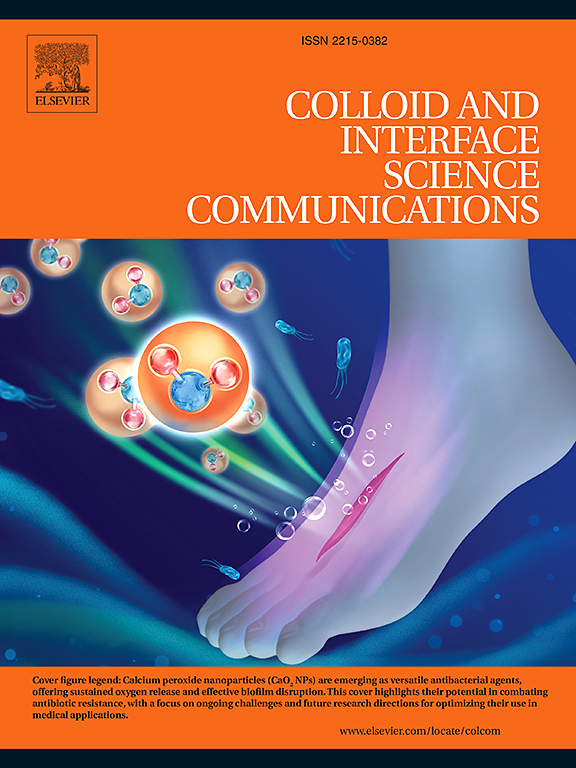Adjusting morphologies of wound dressing by transferring skin textures through electrospinning technology
IF 4.7
3区 材料科学
Q2 CHEMISTRY, PHYSICAL
引用次数: 0
Abstract
Surface topography and mechanical properties of wound dressing significantly influence cell behavior and tissue regeneration process. Skin has unique textures, which are often overlooked in the preparation of wound dressings. Herein, we fabricated biomimetic wound dressings by transferring the surface textures of skin through electrospinning technology. Specifically, the top and bottom surface of pig skin employed as substrates for the collection of electrospinning nanofibers composed of polylactic acid and gelatin (PLLA/GL). Due to the existence of hair on the top surface of pig skin, the transferred nanofiber membrane (skin-top) exhibited scattered small pores (∼50 μm). In contrast, the transferred nanofiber membrane with aluminum foil (Al) as substrate displayed a smooth surface. Benefit from the unique surface properties of skin, the skin-based nanofiber membrane demonstrated improved roughness and enhanced air permeability. Specifically, skin-top based wound dressing showed the best performance in promoting wound healing, including enhanced epithelialization and collagen deposition.

通过静电纺丝技术转移皮肤纹理来调整伤口敷料的形态
创面敷料的表面形貌和力学性能显著影响细胞行为和组织再生过程。皮肤具有独特的纹理,这在制备伤口敷料时经常被忽视。本研究利用静电纺丝技术转移皮肤表面纹理,制备仿生创面敷料。具体而言,以猪皮的上下表面作为基底,收集聚乳酸和明胶组成的静电纺丝纳米纤维(PLLA/GL)。由于猪皮上表面存在毛发,转移的纳米纤维膜(皮顶)呈现出分散的小孔隙(~ 50 μm)。而以铝箔(Al)为衬底的纳米纤维转移膜表面光滑。得益于皮肤独特的表面特性,基于皮肤的纳米纤维膜表现出改善的粗糙度和增强的透气性。具体而言,基于皮肤的创面敷料在促进伤口愈合方面表现出最好的性能,包括增强上皮化和胶原沉积。
本文章由计算机程序翻译,如有差异,请以英文原文为准。
求助全文
约1分钟内获得全文
求助全文
来源期刊

Colloid and Interface Science Communications
Materials Science-Materials Chemistry
CiteScore
9.40
自引率
6.70%
发文量
125
审稿时长
43 days
期刊介绍:
Colloid and Interface Science Communications provides a forum for the highest visibility and rapid publication of short initial reports on new fundamental concepts, research findings, and topical applications at the forefront of the increasingly interdisciplinary area of colloid and interface science.
 求助内容:
求助内容: 应助结果提醒方式:
应助结果提醒方式:


